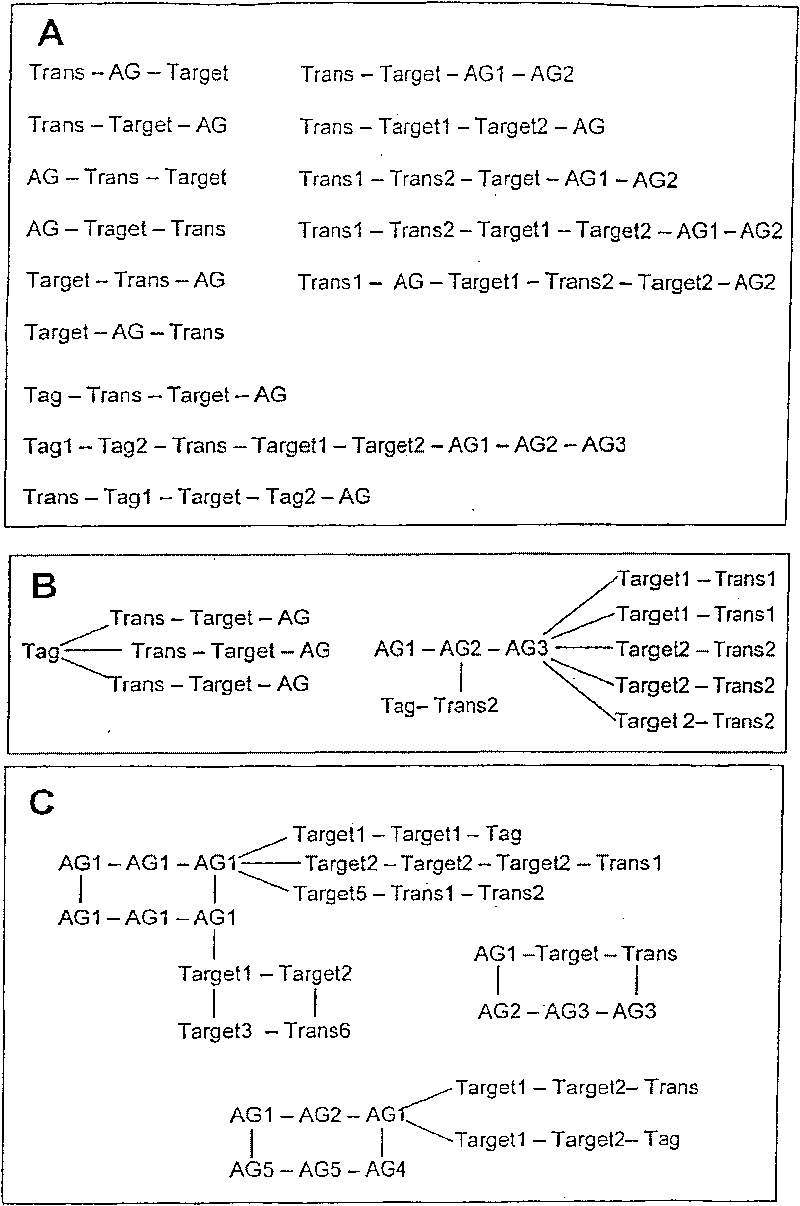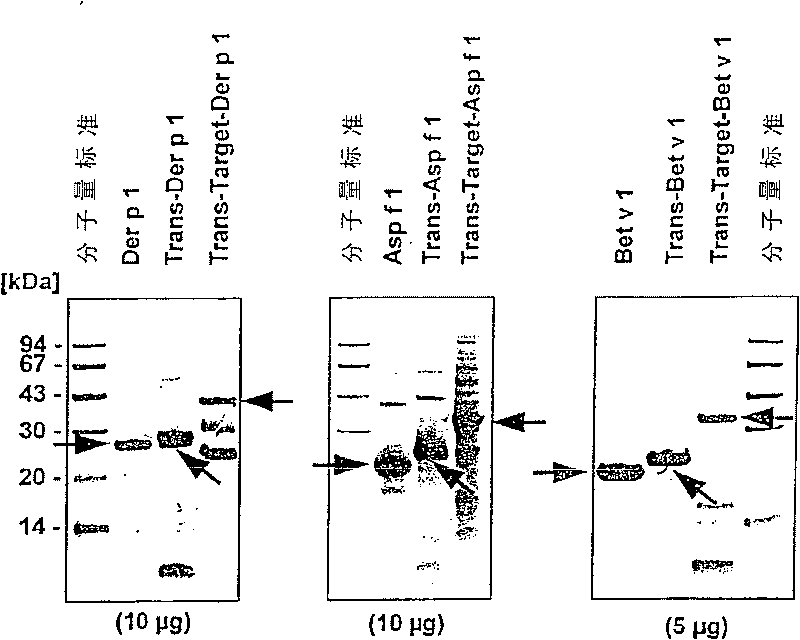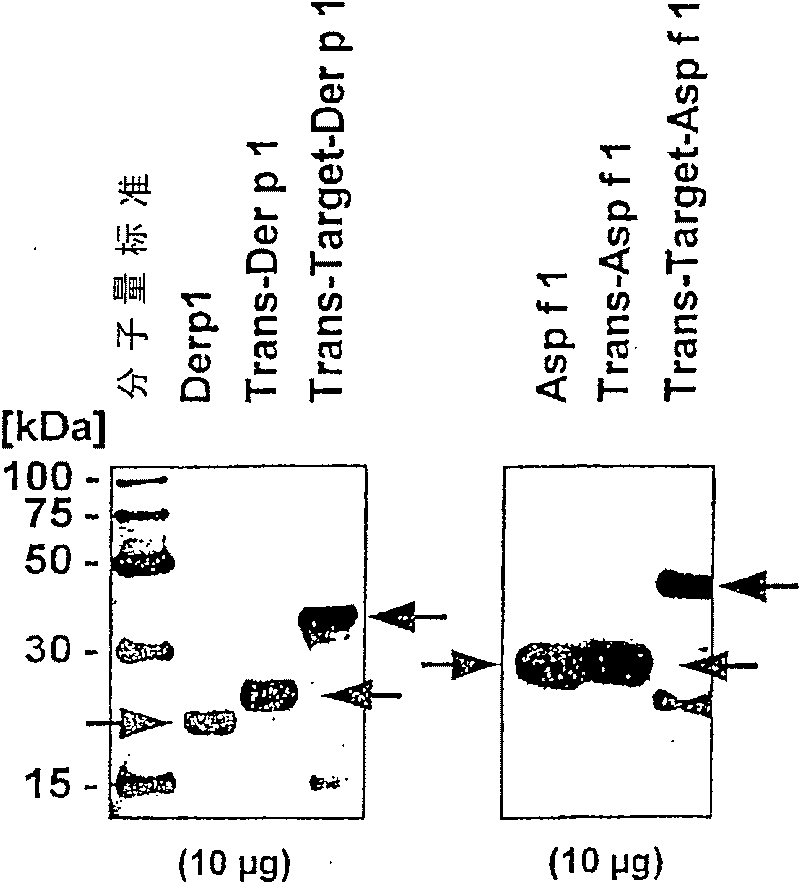Modular antigen transporter molecules (MAT molecules) for modulating immune reactions, associated constructs, methods and uses
A modular, antigen-based technology, applied in chemical instruments and methods, biochemical equipment and methods, antibody medical components, etc., can solve problems such as allergic reactions and desensitization
- Summary
- Abstract
- Description
- Claims
- Application Information
AI Technical Summary
Problems solved by technology
Method used
Image
Examples
example 28
[0093] spacer module
[0094] Spacer modules that can be used in the present invention are all molecules that are suitable for coupling other modules that are constituents of the MAT molecule to each other. Coupling can be done both covalently and non-covalently. The role of the spacer module is to enable The various modules of the MAT molecule are spatially separated from each other such that they do not adversely affect each other on their respective functions. The modules of the MAT molecule of the invention can be coupled via spacer modules which can then be chemically or enzymatically reacted And cleave again, for example by protease. In this way, the modules of the MAT molecule connected by spacer modules can be separated from each other again when required.
[0095] In general, all currently known or future known proteases can be used in the present invention [29, 30]. Currently commonly used proteases are thrombin, factor Xa, enterokinase or the TAGZyme system (Qiagen...
Embodiment 1
[0158] Example 1: Cloning of expression vectors for MAT molecules
[0159] All molecular biology methods described below were performed according to standard methods known to those skilled in the art [43]. Vector pQE-30 (Qiagen, Hilden, Germany) was used to clone the vector for expression of MAT molecule (modular antigen transport molecule).
[0160] In the first step, the nucleic acid sequence encoding the transport module is introduced into a bacterial expression vector. The DNA sequence encoding the amino acid GYGRKKRRQRRR of HIV Tat was introduced into vector pQE-30 in the form of a synthetic oligonucleotide. In addition to the HIV Tat sequence, the oligonucleotide contains a recognition sequence for the restriction enzyme Bgl II at the 5' end and recognition sequences for BamH I, Spe I, Pst I and Hind III at the 3' end. Subsequently, the synthesized HIV Tat sequence was digested with Bgl II and Hind III, and the vector pQE-30 was digested with restriction endonucleases ...
Embodiment 2
[0161] Embodiment 2: obtain the coding sequence of antigen Bet v 1, Asp f 1, Asp f 6 and Der p 1
[0162] The coding sequences for the various antigens in the antigen moiety were isolated by various methods known to those skilled in the art [43]. The Bet v 1 sequence was obtained by synthetic oligonucleotides, the Asp f1 and Asp f6 sequences had been obtained in previous studies and were isolated from the vectors used in these studies [45,46] and subsequently introduced into pQE-30 Vector, Der p 1 sequence was isolated by reverse transcriptase PCR using mRNA from the house dust mite (Dermatophagoides pteronyss inus).
PUM
 Login to View More
Login to View More Abstract
Description
Claims
Application Information
 Login to View More
Login to View More - R&D
- Intellectual Property
- Life Sciences
- Materials
- Tech Scout
- Unparalleled Data Quality
- Higher Quality Content
- 60% Fewer Hallucinations
Browse by: Latest US Patents, China's latest patents, Technical Efficacy Thesaurus, Application Domain, Technology Topic, Popular Technical Reports.
© 2025 PatSnap. All rights reserved.Legal|Privacy policy|Modern Slavery Act Transparency Statement|Sitemap|About US| Contact US: help@patsnap.com



